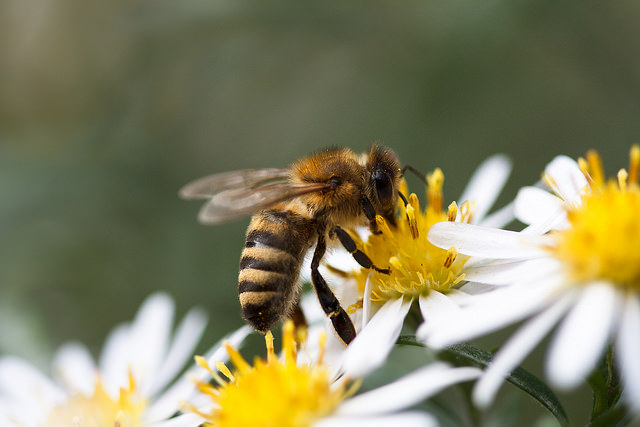Pesticides reducing wild bee numbers
Interview with
There are concerns that the use of neonicotinoids pesticides, - the most commonly  used form of pesticides - on flowers like oilseed rape, are causing declines in these pollinators. In an enormous citizen science project, scientists from Oxfordshire have been able to track several species from the time from when these pesticides were first introduced. Lucka Bibic spoke with Dr Ben Woodcock about their findings...
used form of pesticides - on flowers like oilseed rape, are causing declines in these pollinators. In an enormous citizen science project, scientists from Oxfordshire have been able to track several species from the time from when these pesticides were first introduced. Lucka Bibic spoke with Dr Ben Woodcock about their findings...
Ben - What we've done is we've built on a number of previous studies that have been looking at the potential impact of neonicotinoids on bees. Now a lot of these previous studies have focused on a very small number of bee species; these are bee species that you can actually breed, so that's honey bees, the buff tailed bumblebee, and red mason bee. What we've been able to do is use citizen science data, collected by the bees, wasps and ants recording society, over a really long period of time (that's 18 years), and that stretches the time before when neonicotinoids were not used to the time when neonicotinoids were used on the major mass flowering crop in the UK, oilseed rape.
Lucka - What were the findings of your long term study then?
Ben - What we find is that for those types of bees that specifically feed on oilseed rape, those that are likely to be exposed to this pesticide, they're three times more likely to undergo declines in their distributions than species that don't. And, overall, we find that there's a 10% decline in the distributions of these species and, for some species, this can be as high as 30%.
We've also been able to do that at a really large spatial scale, so we've done that at the whole of England and we're looking at individual 1 kilometre grid scales and we look around at 4,000 of those in England. And we've also been able to extend beyond previous studies into looking at many, many species.
In the UK, there's about 250 species of wild bee and what we've been able to do is look at population changes, or changes in distributions of these species, for 62 of these. Now many of the remaining species are just simply too rare to do an analysis on. And what this whole approach has allowed us to do is relate these changes in populations, or the distributions, over time and see how we get a response to oilseed rape as it's treated with neonicotinoids.
Lucka - OK. And how many people or farmers are using this type of pesticide?
Ben - So at the end of our study it was about 85% of fields were treated with neonicotinoids. They're a crucial pesticide and I think it's really important to remember here that the production of many crops is dependent on the use of pesticides. And even if we were in a situation to ban neonicotinoids, alternatives would have to be used. You can't grow, for example, oilseed rape organically in the UK - that's not viable.
So it is quite a complex situation. Farmers are dependent on these pesticides and if we want to keep growing food, which is obviously the case, then we need to come up with management solutions that are compatible both with native wildlife and also with the needs of farmers.










Comments
Add a comment